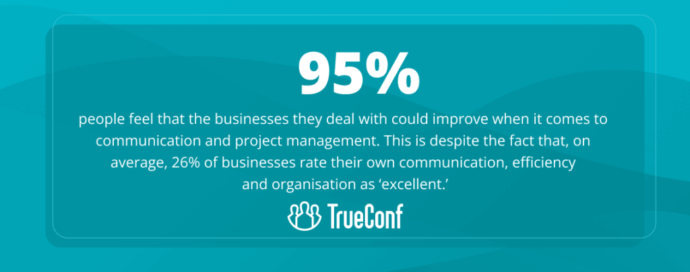Most Popular Communication Channels in the United States
Effective communication is at the core of every successful business, driving smooth operations, fostering strong relationships, and facilitating effective problem-solving. In the United States, businesses rely on a range of communication channels, each offering unique advantages that cater to different needs and contexts. From in-person meetings to digital messaging platforms, these channels enable companies to engage with clients, colleagues, and partners in ways that enhance collaboration and productivity. Here’s an in-depth look at six essential business communication channels widely used across the U.S., and how each one positively impacts business practices.
6 Essential Types of Business Communication Channels
Today, a successful business cannot exist without a strong brand identity such as social media marketing agency, a memorable design, and most importantly, efficient communication channels. Luckily, modern technologies provide an array of opportunities to run your business in a digital environment, communicate with your employees remotely, and reach your clients and customers. This article covers popular mediums of communications and describes what’s best for your business goals. Let’s start!
1. Face-to-face communication
Face-to-face communication features direct contact between two teammates. In some cases, this type of communication may be the quickest and most reliable method of interaction. People have been working, arguing, and discussing ideas face-to-face for thousands of years. It also brings intimacy and trust to your business relations.
However, such a communication channel may not always work, because it often happens that the same organization has several branches located in different parts of the city or even country, and the employees still need to stay in touch. Besides, effective marketing strategies are crucial for business success. As the proverb says, “It takes a village to raise a child”, and the same goes for a successful business: you cannot build a team without having collaborative discussions, meetings, and standups. Implementing influencer outreach strategies can enhance your brand’s visibility, but it’s important to establish genuine relationships and measure their impact to ensure meaningful engagement.
How face-to-face communication improves business
There are many benefits to face-to-face communication in business. First, it allows for immediate feedback and two-way dialogue, which is essential for problem-solving and decision-making. In a meeting, people can share ideas and get immediate feedback from others, which can help them to come to a consensus more quickly.

Face-to-face communication also allows for nonverbal communication, which is often very important in business. Gestures, facial expressions, and tone of voice can all communicate important information that is not conveyed in words alone. This can help to build trust and better relationships between coworkers.
Finally, face-to-face communication can help to build a sense of team spirit and camaraderie. When coworkers are able to meet in person and get to know each other, they are more likely to work together cooperatively and be more productive. In these in-person settings, sharing contact details through a QR code business card makes networking faster, easier, and entirely paper-free.
2. Video conferencing
In any business, meetings are held to discuss current issues or reflect on the team’s work. However, it is not always possible to gather the key employees at the time of the meeting for various reasons. A good solution for organizing joint work in this case would be the use of a video conferencing system, often branded with a custom logo to reflect the company’s identity.. This communication channel saves companies money and maximizes collaboration, keeping productivity high.
Video conferencing is equally beneficial for any sphere or vertical case. For example, video meetings can help doctors run online appointments, facilitate virtual court environments, or provide your clients with options to communicate with call agents without visiting physical branches.
Take your team communication to the next level with TrueConf!
A powerful self-hosted video conferencing solution for up to 1,000 users, available on desktop, mobile, and room systems.
How video conferencing improves business
The use of video conferencing completely replaces the need for business trips, significantly saving the company time and money. Another advantage of this type of remote communication is the reduced time for decision-making. Since today’s market is very dynamic, sometimes the speed of reaction to certain events can determine the success of a company, and using the technology of video conferencing, you can put together a video meeting in a couple of clicks.
3. Phone calls
Can you imagine life without mobile phones? Over the past 30 years, we’ve heavily relied on mobile technologies to communicate with our friends and relatives and be available 24/7, in any location. This is especially beneficial for businesses that need to successfully achieve marketing goals and be both quick and flexible in ever-changing market contexts.
People get used to phone calls, so there’s no need to create an onboarding series for the older generations – this is a medium of communication that is equally available to any person. However, phone communication does not really help to manage a distributed team because it does not provide visual contact as opposed to video conferencing.
How phone calls improve business
In business, phone calls provide a quick and direct line of communication that enables efficient problem-solving and decision-making, especially when integrated with sales CRM software. They are particularly useful in situations where immediate feedback or clarification is necessary, as well as in customer service, where voice interaction adds a personal touch that helps build rapport. For businesses looking to enhance this personal touch and streamline customer interactions, an AI voice Agent. can be a transformative tool, handling routine inquiries and allowing human agents to focus on more complex issues. Phone calls facilitate one-on-one communication that can be more effective than emails for certain types of discussions, reducing back-and-forth exchanges and speeding up response times.
Additionally, phone conversations foster a sense of trust, as clients and partners can directly interact with a human voice, building a stronger emotional connection. By enabling real-time communication, phone calls help streamline operations, address client concerns efficiently, and keep the lines of communication open and reliable.
4. Email
Email is one of the most widely used communication tools in business, valued for its versatility and formality. It is commonly used for sharing detailed information, sending files, and creating a documented trail of communication. Email serves a range of functions, from internal announcements and client communication to customer service inquiries and to enhance marketing campaigns. It allows businesses to reach multiple recipients simultaneously and provides a written record that can be referenced later.
Email is also time-efficient, enabling recipients to read and respond at their convenience, which is ideal for non-urgent matters. With its wide accessibility and ability to support long-form communication, email is an indispensable tool in the modern business world.
How email communication improves business
Email improves business communication by offering a formal and documented method of information exchange, ideal for detailed discussions and important updates. Unlike other channels, email provides a permanent record of interactions, which can be invaluable for tracking decisions, agreements, and follow-ups. This is particularly important for legal or compliance-related correspondence.
Additionally, email’s ability to handle attachments and integrate with other tools makes it suitable for sharing important documents and files. By enabling communication that recipients can access on their own schedule, email offers a balance between flexibility and professionalism, enhancing productivity and reducing the likelihood of misunderstandings.
5. Instant text messaging
Instant messaging has become a popular communication channel in business, allowing teams to communicate in real-time. Platforms like Slack, Microsoft Teams, and WhatsApp have transformed workplace communication, providing a quick, informal way for employees to exchange information, ask questions, and collaborate on projects. Integrated notification systems enhance these platforms by ensuring that team members never miss important updates or messages, keeping everyone aligned and informed. Instant messaging supports both one-on-one and group chats, making it highly versatile for team communication and collaboration. Its ease of use and immediacy make it ideal for quick updates, task coordination, and casual interactions. Instant messaging is particularly beneficial for remote and hybrid teams, helping to bridge the communication gap and maintain a sense of connectivity within the team.
How messaging improves business
Businesses often require immediate reactions from their team to certain events. Instant messaging tools (or service SMS) allow you to real-time, exchange documents, create personal and group chats, send video and audio, set a status, or mention a colleague in a chat.
Additionally, incorporating a shared inbox into your business operations can enhance collaboration by providing a centralized hub where team members can collectively manage and respond to incoming messages, fostering efficient communication and streamlined workflows.
6. Social media
Social media refers to applications and online platforms that enable users to find people, communicate, and create, share, and interact with content making it a powerful tool for social media marketing. Due to the rapid development of social networks, it is no longer necessary to consider them solely as a means of communication that enables people to send Instagram or Facebook messages to each other, now with the right approach they will become a powerful tool for the development of your business.
After all, tens of millions of people around the world use them daily, receiving huge flows of information. Social media ads have become an essential part of this shift, allowing US based social media agencies and businesses to reach their target audience with highly tailored messages based on users’ interests, behaviors, and demographics.
Impressively, there are more than 2.3 billion active Instagram users each month. This staggering figure demonstrates the platform’s enormous potential and reach for companies looking to engage with a large consumer base.
Social media, improves business communication by offering a dynamic platform for customer interaction, brand promotion, and reputation management. It allows businesses and performance creative agency to establish and maintain a direct line of communication with their audience, providing updates, responding to questions, and addressing feedback. Social media enables real-time engagement, which fosters stronger relationships with customers and enhances customer satisfaction.
By sharing valuable content and showcasing company culture, along with using compelling captions for Facebook, social media also attracts new clients and talent, helping to expand the business’s reach.
Additionally, social media analytics provide insights into audience preferences and engagement levels, allowing businesses to refine their strategies and improve their offerings.
Conclusion
Each of these communication channels plays a unique role in the U.S. business landscape, enabling companies to choose the best method for their specific needs and goals. From in-person meetings that build trust to social media platforms that extend brand reach, these channels work together to facilitate effective communication in the digital age. As businesses continue to adapt to changing communication preferences and technological advancements, choosing the right channel for the right purpose will remain essential to maintaining strong relationships, ensuring smooth operations, and driving long-term success.
About the Author
Nikita Dymenko is a technology writer and business development professional with more than six years of experience in the unified communications industry. Drawing on his background in product management, strategic growth, and business development at TrueConf, Nikita creates insightful articles and reviews about video conferencing platforms, collaboration tools, and enterprise messaging solutions.





Follow us on social networks